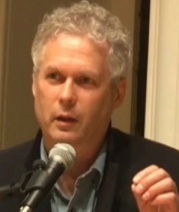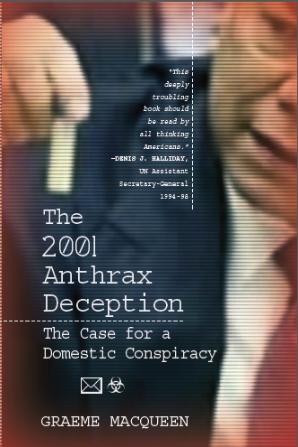
GRAEME MACQUEEN, a prominent professor and Director of the Centre for Peace Studies at McMaster University took early retirement to devote his time and energy to peace and justice work with a focus on the events and anomalies of 9/11. While deception is a must for war, the campaign for 9/11 Truth hopes to lay a foundation for genuine peace and justice.
Graeme MacQueen, born in Nova Scotia, received his Ph.D. in comparative religion from Harvard University, and taught in the Religious Studies department of McMaster University for 30 years. In 1989 he became founding Director of the Centre for Peace Studies at McMaster, after which he helped develop the B.A. programme in Peace Studies and co-directed (with $2 million in government, UN and NGO funding) peace-building projects in Sri Lanka, Gaza, Croatia and Afghanistan. He has also contributed to the development of the Women’s Peace Brigade in north India (active now in several states) and was involved for some years in the Third Option, a peace initiative for Afghanistan. He has published numerous peer-reviewed articles and book chapters as well as four books.
He has specifically addressed the Peace Movement to urge them to overcome their psychological resistance to 9/11 and look at evidence challenging the official narrative. He has also written four articles for the Journal of 9/11 Studies, including 118 Witnesses: The Firefighters’ Testimony to Explosions in the Twin Towers. Dr. MacQueen has written several peer-reviewed articles on anomalies of 9/11, served on the Steering Committee of the International Hearings on the Events of September 11, 2001, and is a member of the Consensus 9/11 Panel.
ABOUT The Anthrax Deception: The Case For A Domestic Conspiracy by Graeme MacQueen
SYNOPSIS
The 2001 anthrax letter attacks in the United States killed five people and
wounded dozens. They were widely blamed on extremist Muslims and
their backers and used to support the invasions of Afghanistan and Iraq.
They were also used to justify and hasten the passage of the USA
PATRIOT Act, which was being presented to Congress just as the first
anthrax victim grew ill.
In October 2001, one of the hypotheses that gained ground was that of
the Double Perpetrator, the claim that al-Qaeda was carrying out the
attacks with the support of Iraq. Much evidence was put forth to support
this Double Perpetrator hypothesis but independent scientists soon
discovered that the anthrax spores came from a domestic lab in the US
serving the military and intelligence communities, not from al-Qaeda or
Iraq.
The FBI then quickly claimed that an individual was responsible for the
attacks and began noisily looking for this “lone wolf.” In 2008 the Bureau
named Dr. Bruce Ivins of the US Army Medical Institute of Infectious
Disease as the “anthrax killer.” Although the FBI remains committed to
the Ivins hypothesis, the case has been disintegrating for the last three
years. Currently, it is justly held in contempt not merely by scientists who
worked with Ivins but by many journalists as well as several US senators.
But this raises the question: if Ivins did not commit this crime, who did?
This book presents evidence to support the following points:
(a) The anthrax attacks were carried out by a group of perpetrators, not
by a “lone wolf.” The attacks were, therefore, the result of a conspiracy—
by definition a plan by two or more people, made in secret and resulting
in an immoral or illegal act.
(b) The group that carried out this crime consisted, in whole or in part, of
insiders deep within the US state apparatus.
(c) These insiders were the same people who planned the 9/11 attacks
(d) The anthrax attacks were meant to facilitate a seizure of power by the
executive branch of government through intimidation of Congress and
US civil society. They were also designed to achieve public acquiescence
to and support for the redefinition of US foreign policy, replacing the Cold
War with a new and aggressive global conflict framework, the Global War
on Terror.








